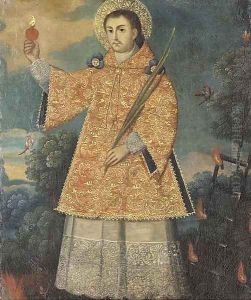Anonymous Cuzco School Paintings
The Anonymous Cuzco School is not associated with a single artist but rather a collective movement that flourished in Cuzco, Peru, from the 16th to the 18th centuries. This art movement emerged after the Spanish conquest of the Inca Empire, during the Colonial period in Peru. The school is characterized by its unique blending of indigenous Andean and Spanish Colonial artistic traditions. The term 'Anonymous' comes from the fact that most of the works were not signed by individual artists, as the concept of personal fame and recognition was not prevalent in Andean culture, and the Spanish colonial system often did not acknowledge the indigenous artists by name.
The Cuzco School is renowned for its religious paintings, which were used for both the purpose of conversion to Christianity and the indoctrination of the native population. The paintings often depicted Catholic iconography, including the Virgin Mary, saints, and scenes from the life of Christ, yet they were infused with local elements, such as native flora, fauna, and symbols. This synthesis created a visually distinctive form that resonated with both European settlers and the indigenous peoples.
Artists of the Cuzco School were typically indigenous or mestizo (mixed European and indigenous ancestry) and were trained by Spanish masters who brought European artistic techniques to the New World. The school is particularly noted for its use of bright colors, gold leaf, and the exaggerated, almost theatrical expressiveness of the figures. Moreover, the artists adapted the European tradition of oil painting on canvas, integrating it with local artistic traditions.
The artworks from the Cuzco School are considered some of the most important contributions to the art history of the Americas due to their historical, religious, and cultural significance. They provide a vivid pictorial record of the cultural exchange between the Andean people and their Spanish colonizers. While the movement faded in the late 18th century, its influence persisted, and today, the paintings from the Cuzco School are highly prized by collectors and museums, and they remain a key subject of study for understanding colonial art in Latin America.
